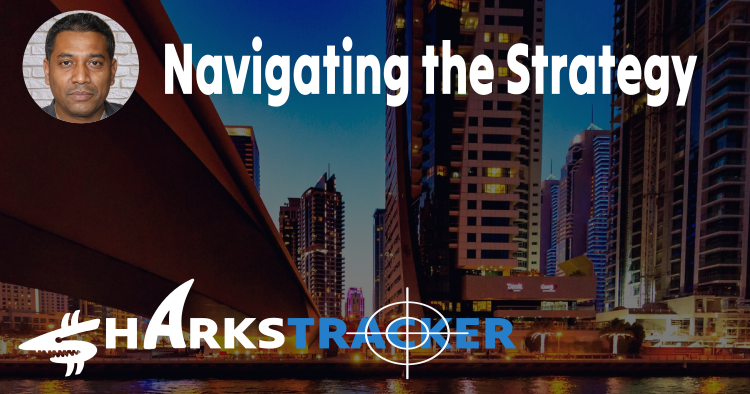Sanofi's Ambitious Plans for Immunology Dominance
2024-01-10
Sanofi, a leading pharmaceutical company, presented at the J.P. Morgan Healthcare Conference where they discussed various topics related to their business. The presentation included key executives such as Paul Hudson, the Chief Executive Officer, Jean-Baptiste de Chatillon, the Executive Vice President and Chief Financial Officer, and Houman Ashrafian, the Executive Vice President and Head of Research and Development.
During the conference, Sanofi highlighted their goal of becoming one of the world's leading immunology companies. They have made significant progress in this area, with their drug Dupixent expected to generate sales of around 13 billion this year. To fully deliver on their assets, Sanofi plans to increase their research and development spending by about 700 million. They aim to increase their Phase 3 trials by more than 50% over the next 24 months.

Sanofi is actively utilizing artificial intelligence (AI) in their operations, with over 11,000 employees across the company using AI daily for better decision-making. The new Head of Research and Development, Houman Ashrafian, is leading the development committee and utilizing AI to make informed decisions. In fact, AI recommended moving forward with a Phase 3 trial for an important medicine, and Sanofi is focused on leveraging their decision intelligence to make the best choices.
In terms of partnerships, Sanofi has collaborations with companies like J&J, Teva, and Regeneron. They have also made significant progress in the field of vaccines, with several Phase 3 trials currently in progress. Sanofi has a strong commitment to immunology and believes it is unparalleled. Their successful collaboration with Regeneron in developing Dupixent has paved the way for other key assets like OX40-Ligand, Frexalimab, and the oral TNF.
Sanofi is also focused on the biologic market, recognizing the need for competition and multiple assets to address low biologic penetration in eligible patient populations. They have achieved a 9% penetration rate for Dupixent in the moderate to severe patient population. Sanofi acknowledges that multiple biologics can coexist in the same patient population due to different patient preferences and the need for additional treatment options. Recent launches, such as Beyfortus, ALTUVIIIO, and TZIELD, have been successful, with Beyfortus significantly impacting infant healthcare by reducing emergency room admissions for babies.
In addition to their success in immunology and pulmonology, Sanofi is also focused on other areas like dermatology. Dupixent is considered a groundbreaking medicine with both efficacy and incredible safety. Sanofi aims to continue growing their earnings per share (EPS) even after the intellectual property of Dupixent expires. They have set a target of over EUR10 billion in sales from new medicines by the end of the decade and plan to double the size of their vaccines business.
Sanofi places a strong emphasis on environmental, social, and governance (ESG) factors and key performance indicators (KPIs). They ensure that the patient voice is included in the creation of all their studies and have a diversity and inclusion objective in all their studies to represent society. Sanofi aims to become a pure-play biopharma company and is shifting its focus away from the consumer business. They are integrating technology into their decision-making process and aim to achieve greater than EUR10 billion in new sales by 2030.
Sanofi's business development and capital allocation priorities focus on game-changing science that will fundamentally improve patient outcomes. They have recently made deals with Teva and J&J for external innovation. The ramp-up of the Beyfortus product is going well, with demand surpassing supply. Sanofi aims to reach all infants, regardless of demographic or socioeconomic standing, with the Beyfortus product, which covers the age range of zero to 12 months.
Sanofi is also prioritizing the development of a vaccine for respiratory syncytial virus (RSV) to provide more protection against RSV and potentially other diseases, especially in older adults. The new Head of Research and Development, Houman Ashrafian, plans to focus on the late-stage pipeline, dynamic capital allocation, and the use of AI for portfolio reallocation. Sanofi differentiates itself in the field of immunology by building a platform that ensures patients can receive a combination of Sanofi products throughout their treatment. They are also working on improving the manufacturing process and cost of goods sold for Dupixent.
Sanofi's approach to the lifecycle management of their molecules involves building out the franchise approach to these drugs. They focus on small molecule with biologic combos, walkthrough strategies, patient stratification, and pushing the efficacy bar and durability. Sanofi believes that the asset-driven description of winners and losers in the industry is too narrow and aims to participate at scale with multiple assets to give patients more choice in terms of efficacy, convenience, and selectivity. They have created an ecosystem in immunology where they can deliver multiple shots and have important medicines with generous peak year sales.
In conclusion, Sanofi's presentation at the J.P. Morgan Healthcare Conference covered a wide range of topics related to their business. They are focused on becoming a leading immunology company, with a strong commitment to developing innovative treatments. By leveraging AI and technology, pursuing partnerships and collaborations, and prioritizing ESG and KPIs, Sanofi demonstrates their dedication to improving patient outcomes and driving growth in the pharmaceutical industry.

